Alfa Romeo’s GTV epitomizes the handsome, sporting classic car
I watch the rev counter climb on that big, sweeping Jaeger gauge as I head up a steep coastal California grade with my right foot pinning the accelerator. It’s there, threading through the narrow canyons at full song, that the joy of Alfa’s GTV comes into focus.
The little Alfa’s performance limits can be approached on a twisty backroad without crossing into the realm of the wildly illegal; it is quick, but not fast. Many a vintage Porsche 911 driver have found themselves hard-pressed to keep a well-driven GTV at bay. This car rewards the craft—a driver who can maintain momentum, double-clutch, and heel-toe will step from the GTV after twenty minutes behind the wheel feeling as though they accomplished something special. The GTV embodies the essence of driver-focused European GT cars of the 1960s and offers a delightful driving experience that compares as favorably to its peers today as it did back then.
Alfa Romeo introduced their 105-series Coupe, the Giulia Sprint GT, in 1963. The crisp Bertone lines, styled by Giorgetto Giugiaro, were considerably more modern than the outgoing 101-series Giulietta/Giulia Sprint Coupe, which was decidedly a 1950s car in its cosmetics. The early “stepnose” Giulia Sprint GT models, distinguished by a hood that is placed slightly higher than the nose of the car, stood out as clean and characterful, with a hint of sporty assertiveness. A twin-Weber carbureted version of Alfa’s 1600-cc twin-cam lived under the hood, offering the characteristic high-revving performance Alfa Romeo had become known for. A convertible version, the GTC, was offered in 1965–1966, with only around 1000 examples built.

1966 brought a raft of model improvements, leading to the revised designation of Giulia Sprint GT Veloce, which is the origin of the “GTV” moniker. These cars still featured the early stepnose bodywork, alongside minor changes to trim and a revised 1600-cc engine, and would be produced until 1968.
The 1750 GT Veloce, a big step in the 105’s evolution, was introduced in 1967. The familiar design evolved slightly, the most notable changes being the retirement of the stepnose hood and the addition of a new interior. Significant changes were also made to the chassis, suspension, and brakes. In addition, the engine capacity increased to 1779 cc, and U.S. versions became the first Alfas to be fitted with SPICA fuel injection. The same engine was used in the 1750 Berlina and the 1750 Spider, offering convenient economies of scale for the Italian manufacturer.
Of the 1750 models, 1969 model-year cars are particularly prized, as they feature the one-year-only “flying buttress” seats, which are sought out for their style and comfort (though they are costly and complicated to reupholster). Other prized early GTV features include their smaller taillights and a full complement of Jaeger instruments that would feel right at home in a car costing ten times as much.
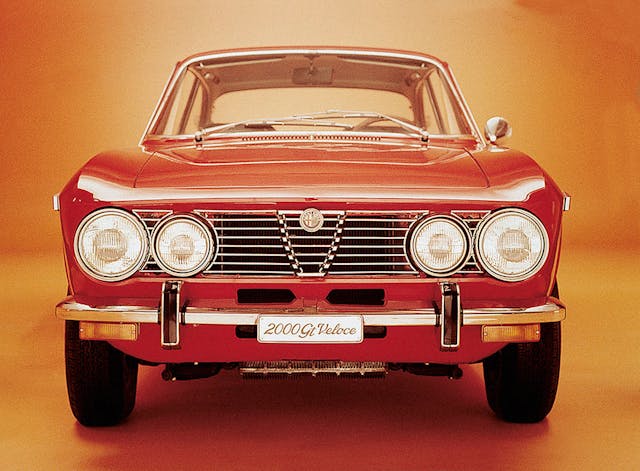
The final iteration of the GTV series would be introduced in 1971 and would be known as the 2000 GTV, a nod to the increased displacement of the SPICA-injected 1,962-cc engine, which shared the same basic architecture as previous Alfa Romeo twin-cam models. The 2000 GTVs are identified by several visual updates not seen on earlier cars, including the larger rear taillights (which had actually been introduced on the last 1750s), horizontal grille slats, and a completely revised interior featuring a new seat design and modernized dash architecture. The last GTVs sold in America were 1974 model-year vehicles, though 2000 GTVs were produced for other markets into 1976.
Adding another layer of complication to the various mix-and-match iterations of GTVs, “Junior” models with smaller displacement engines were also available, though these were never sold in the United States. Juniors retained the same chassis and basic architecture of their larger-displacement cousins but were offered initially with 1300-cc engines carried over from the Giulietta series, with a few improvements. With the introduction of the 2000 GTV in 1971, a 1600 Junior model was offered alongside the 1300 Junior. Early Juniors are harder to distinguish from their Giulia Sprint GT brethren but have a few telltale design features, such as a single horizontal grille bar and a two-spoke steering wheel. The 1970 and later Juniors are readily identifiable as they feature only two front headlights as opposed to the four-headlight GTV design.
This author somewhat prefers the driving experience of the 1300-cc carbureted Junior models—as a wise man once said, “there is nothing more fun than driving a slow car fast,” and wringing out the smaller engine is every bit as fun. From a budget standpoint, Juniors trade at a considerable discount to GTVs, though the price discrepancy should not be mistaken as an indicator of an inferior driving experience.
The 105-series platform also lent itself to other, more bespoke applications, including the homologated lightweight GTA racing versions, as well as the quirky, wedge-shaped Junior Zagato, built in small quantities in both 1300-cc and 1600-cc form.

In period, GTAs were stars in European touring car racing, while both GTAs and GTVs did battle in the United States, most notably in the SCCA Trans-Am’s Under 2.5 Liter class. Racing against competition that included Peter Brock’s BRE Datsun 510s, as well as a raft of BMW 2002s and various lesser-known Trans-Am cars (Ford Pintos, Toyota Corollas, Volvos, and Opels all raced in the series, too), the 105-series Alfas held their own, usually at or near the front of the pack. In fact, in the championship-deciding 1971 Trans-Am race at Laguna Seca, Horst Kwech’s Alfa GTV actually beat John Morton’s BRE Datsun 510 on the track, only to be later disqualified for a rule infraction.
Considering the number of variations on the 105-series chassis, market prices cover a broad range. Most stepnose Giulia GT and GTV models fall in roughly the $45,000–60,000 range for good, drivable, non-rusty examples, with #2 (Excellent) condition cars fetching in the region of $100,000 or more. Of course, tatty “drivers” can be had for less—a reasonable-looking but somewhat tired 2000 GTV in Canada recently sold for just $18,750 on Bring A Trailer. The rare GTC convertible stepnose models can be found in the $70–$100k range, but rarely come to market. Prices for top GTVs have separated from the pack, while solid drivers are slightly above their pre-pandemic levels. Juniors have benefitted from more attention lately but remain on the affordable side of the Alfa spectrum.
Gen X, the oldest members of which may have seen these cars as kids, makes up 57 percent of policy quotes for the GTV and GT Junior, up three points from 2021. That makes the GTV’s demographics just slightly younger than Alfa demographics as a whole.
Rust can be a concern on these cars, as with most 1960s and 1970s Italian classics. Be wary of particularly rusty cars; the GTV employs a unibody design, so a significantly rusty car may not be a good starting point as a “keeper.”
While any well-sorted GTV is a joy to own and drive, two models stand out as offering particularly good value. The 1300-cc Junior models are probably the least desirable variants from a market perspective since the market seems to think there is no replacement for displacement. I actually believe these are some of the best-driving 105-series cars, as the 1300-cc powerplant is more rev-happy than the more prized 1600-, 1750-, and 2000-cc versions. These 1300 GT Juniors represent great value from the standpoint of those who want to put their Alfa to use.
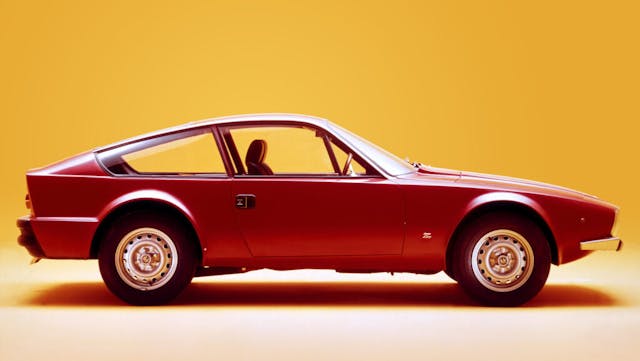
The coachbuilt Junior Zagato models are perhaps the most interesting, despite their polarizing wedge design; for around the same price as a decent GTV 1750 or 2000, you can acquire a limited production, Zagato-bodied Alfa Romeo. These lightweight Zagato versions can really fly in the right hands and are perhaps one of the great “sleepers” in the market of 1960s/1970s European collector cars.
Ultimately, the Alfa GTV’s greatness lies in its elegant simplicity. Excellent road manners, handsome Italian good looks, robust mechanicals, and enough room inside for two passengers and a couple of suitcases all add up to a well-balanced, functional collector platform that’s hard to beat.
Whatever flavor you choose, Alfa’s GTV is a perennial classic. Get yourself a well-sorted one, and every mile will be a joy.
***
Check out the Hagerty Media homepage so you don’t miss a single story, or better yet, bookmark it. To get our best stories delivered right to your inbox, subscribe to our newsletters.
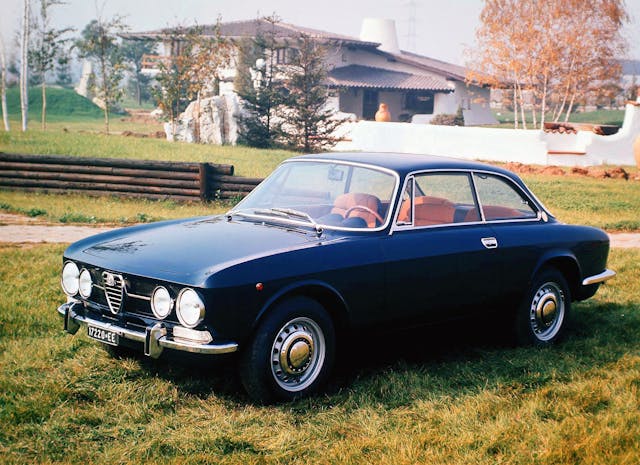

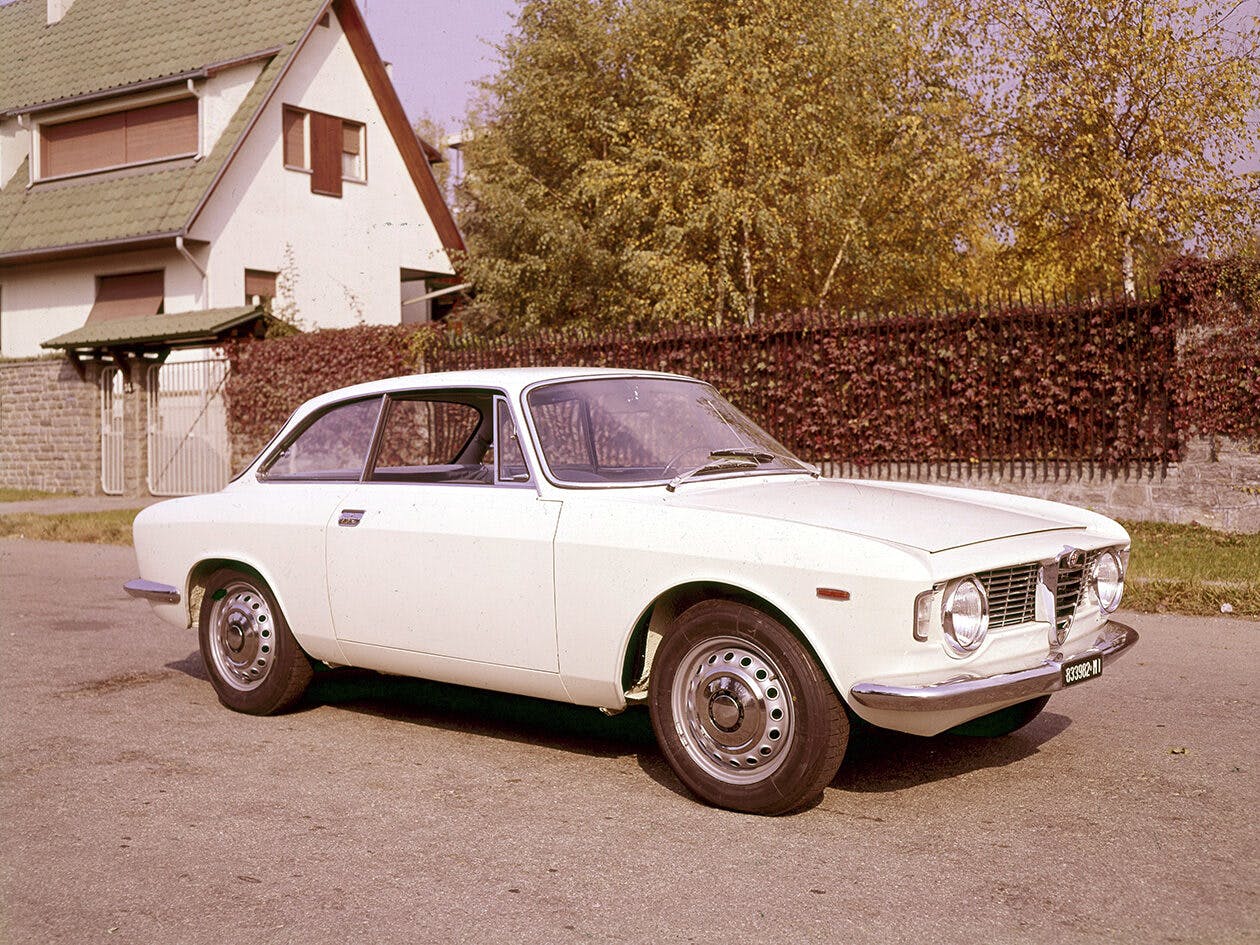
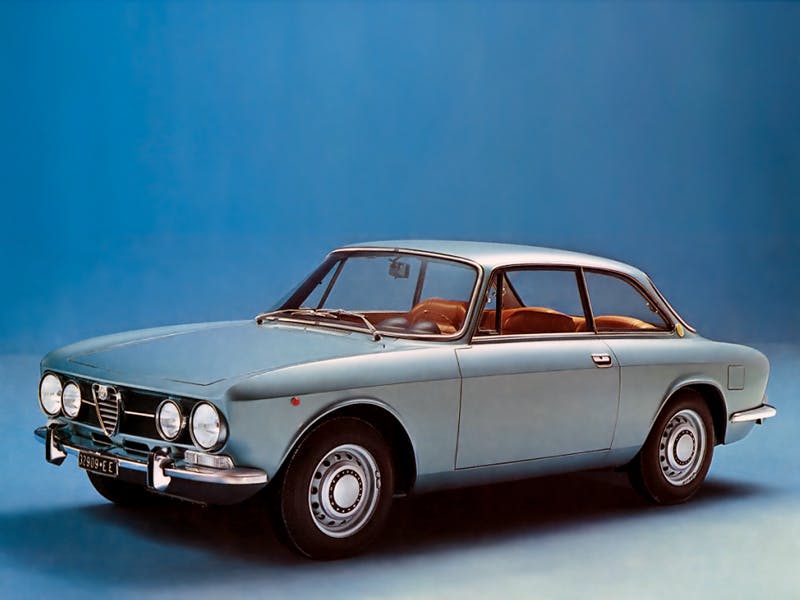
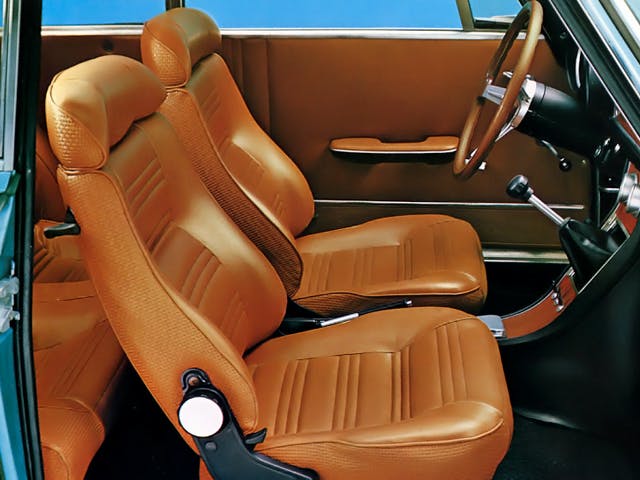


This is on the top of my dream car garage list. Throw a late ‘50’s Willy’s pickup next to it and I would be set!
Beautiful cars but I’d have to go with a Lancia Fulvia Coupe. Or better yet, do both.
Alfa Romeo 8C is a gem design for that era.,( must be in candy apple red).!!!
I had a red 1977, Alfetta 2000 executive, 540,OOOkm IN 36 years.!!! Best time to complete 840km distance from a to b at night was 5hrs 25min going through 6 towns.
Nb!!! The engine was NEVER opened!!!!!. NORMAL , TWIN OVERHEAD CAMS with two side draught DELLORTO carbs. At 120km/hr or 225km/ hr, petrol usage stayed 10km/l!!!!
OK!!!!!!!!!!
I acquired a 74 GTV out of San Jose CA. in 2014. Absolutely rust free example with tons of performance upgrades including light weight gears, rebuilt engine and suspension with springs and bushings. It’s actually the well known J. Soman alfa that I purchased from his widow. We used it for 8 years in California before bringing it home to CT. We loved it so much that we bought another 74 GTV out of NY in 2016 to use around the east coast. Now the twins are together and happy under one roof. I use them more often than any other car in our small collection.
Beautiful cars and great rev happy motors.
No car manufacturer has been able to repeat the beautiful simplicity of the design. Nearest contender is the Porsche 911.
These were plentiful in South Africa (I see there’s another South African in this thread.) I once had the privilege to ride along in one of these. I think it was a GT Junior. Exhilarating to the point of unsafe.
Fabulous cars, I had GTV’s and The Spyder version for 20 years and they are still a favorite Rust was the hardest issue to deal with. !969’s to 1974’s. fun to drive.
In 74 I bought a 72. It is still my all-time favorite car. It was not perfect but it was a joy to drive. I had it for about 3 years. I sold it to a guy that totaled it about 3 months later.
It was Champagne with Cromodoras.
It was easy to take it to 100 in 4th and then shift to 5th and it would keep pulling. 132 was the fastest I ever had it.
I have had a 74 GTV 2000 for 35 years and recently bought a Junior Zagato 1300. The GTV was modified and is a blast to drive. Although the stiff suspension and exhaust notes can wear you out after a couple of hours The Jr Z is bone stock and is more fun to drive when time is not in the equation. It glides through the corners. The aerodynamics with the rear opening hatch allows for window open driving with very little wind noise. The rear hatch is just cool.
Wonderful cars – quite possibly the best classic car you can buy. You can go touring, do rallies and track days, or just cruise around and enjoy the drive. They are reliable if well maintained too! I’ve had my 1750GTV for 35 years and done over 130,000 miles and its never failed to get me home or to a workshop! Get a good one and you will be smiling all the way.
Great races between Horst Kwech in his GTV, John Buffum in his Escort and John Morton in his 510. The GTV’s are beautiful and if I hadn’t been into MG’s so much would have bought one. Now a bit pricey. Still on my dream car list to own some day.